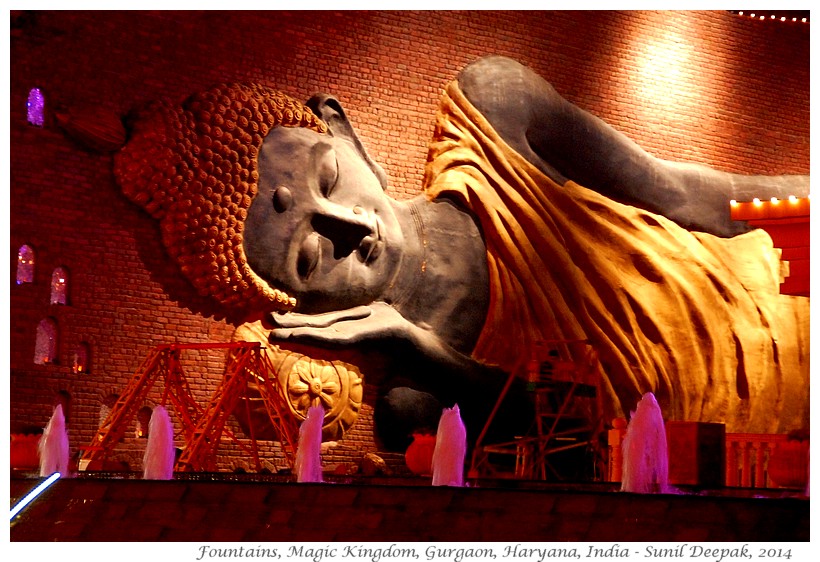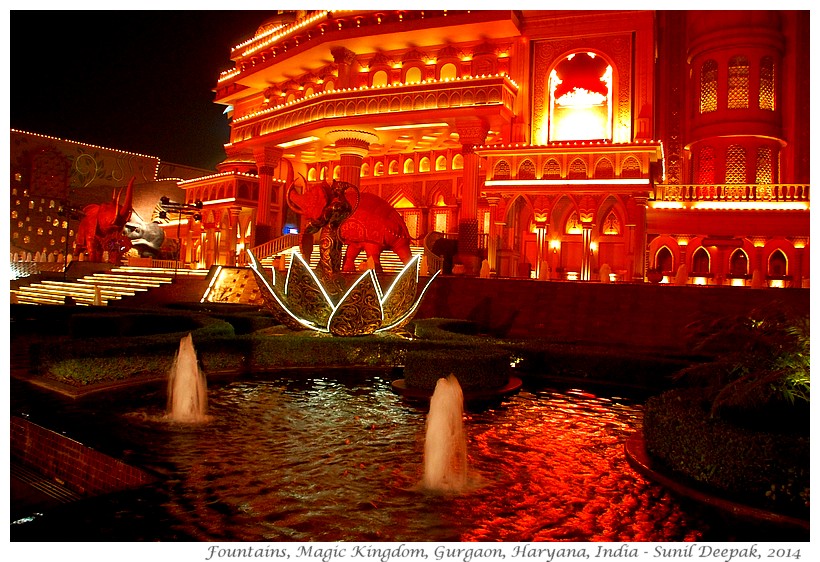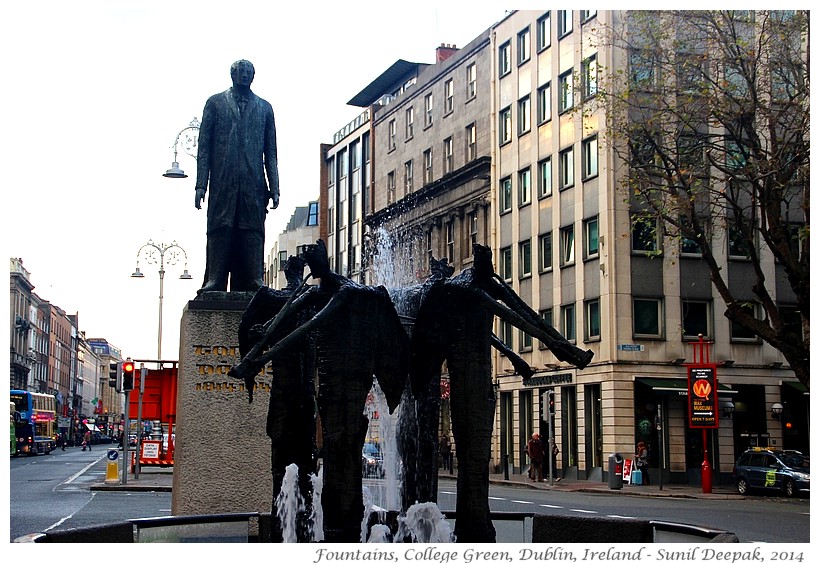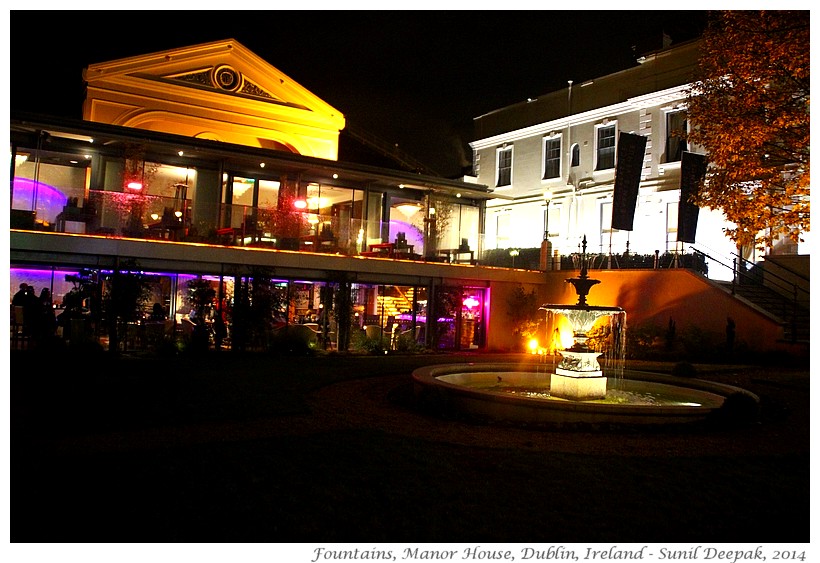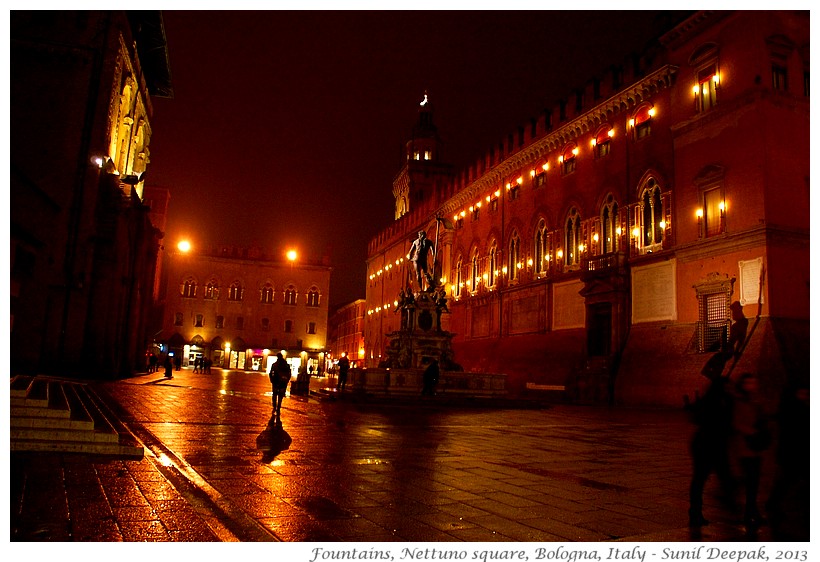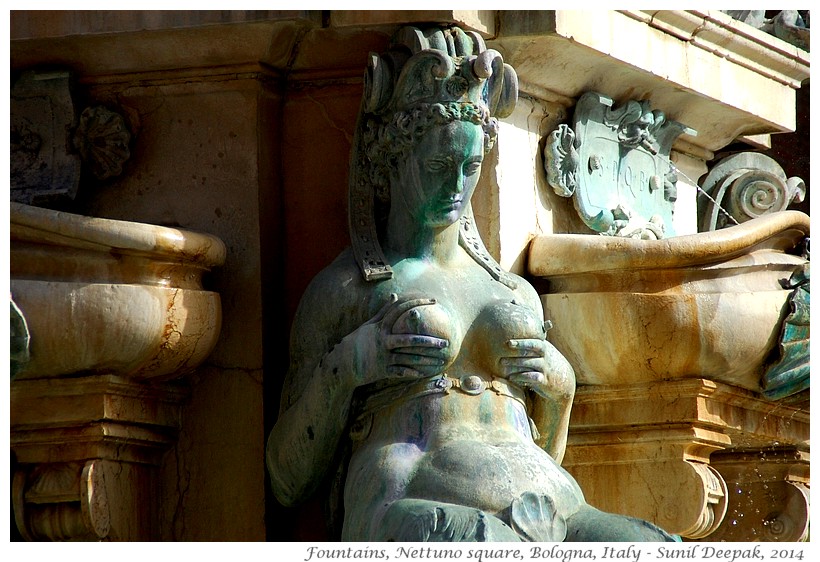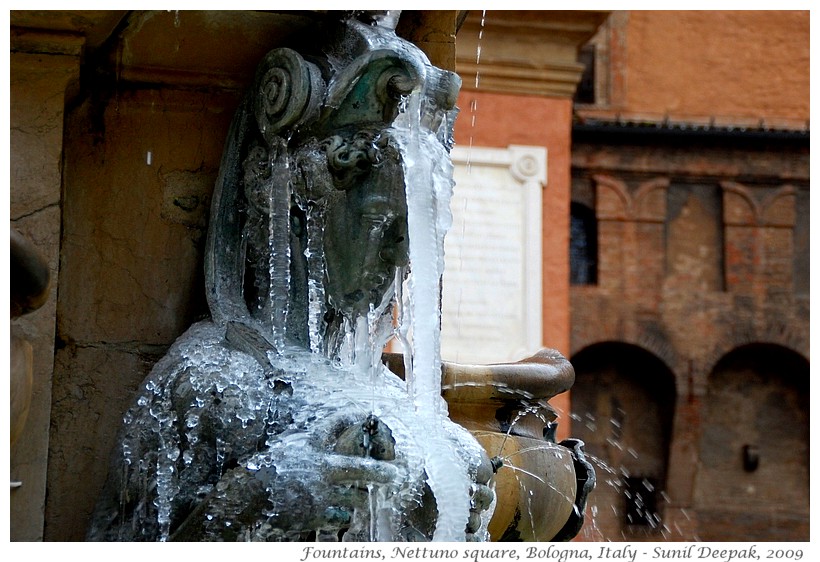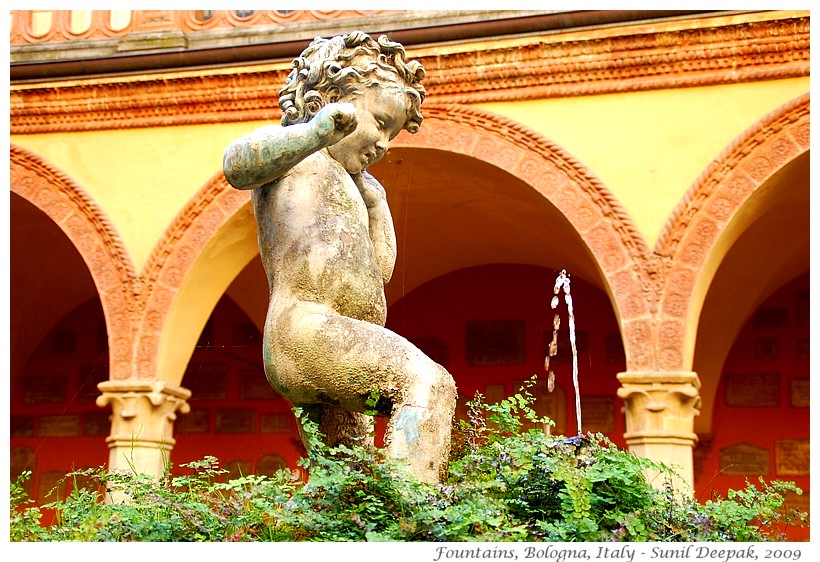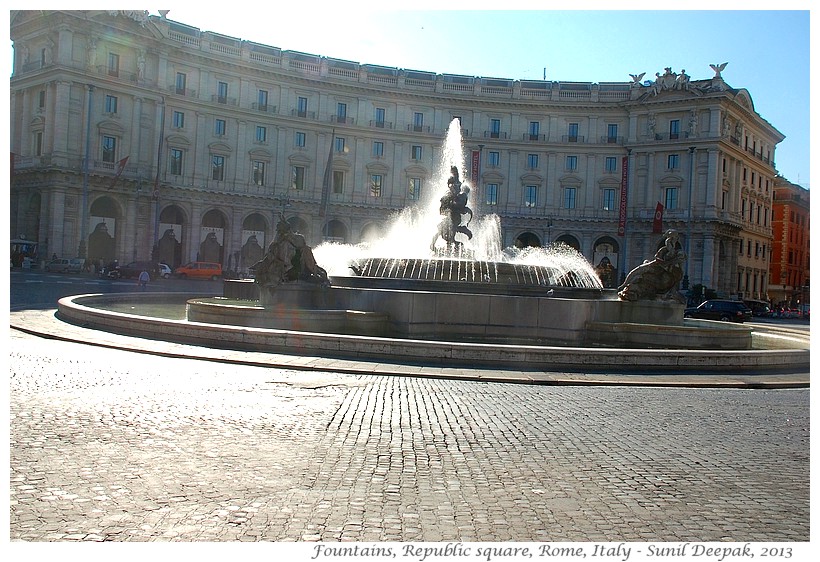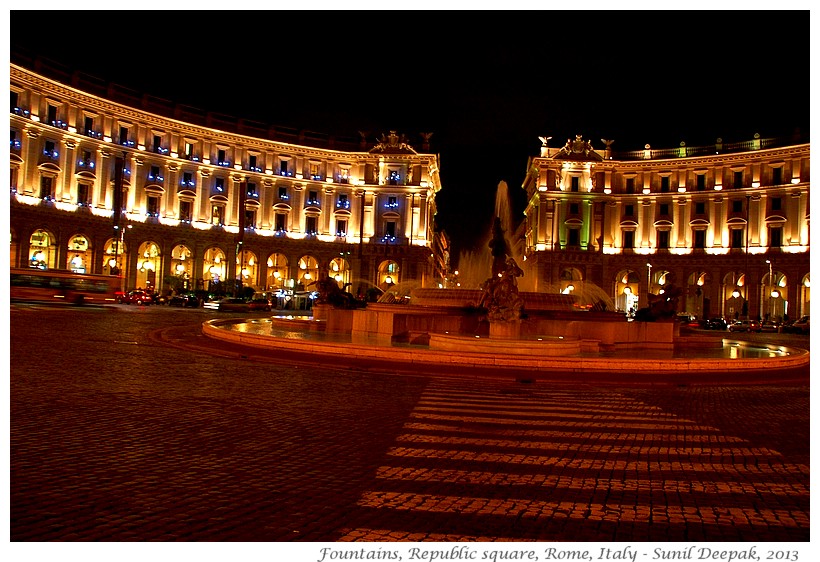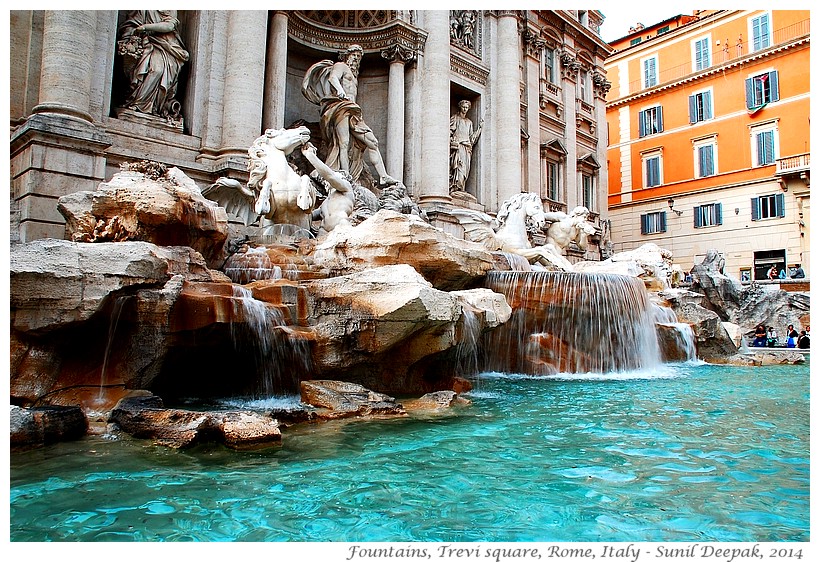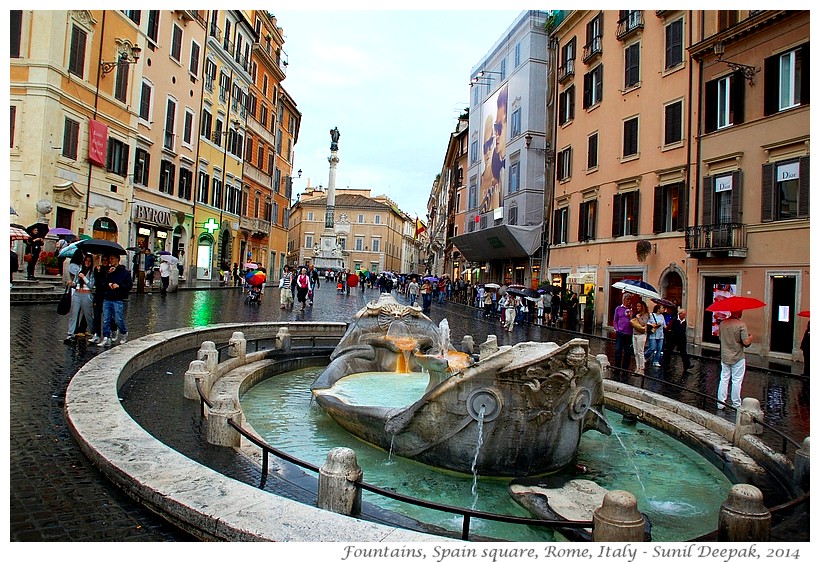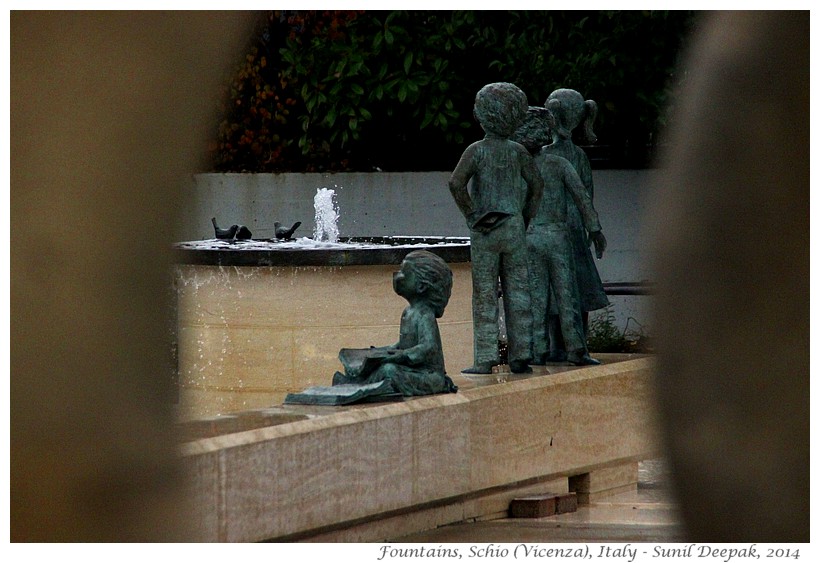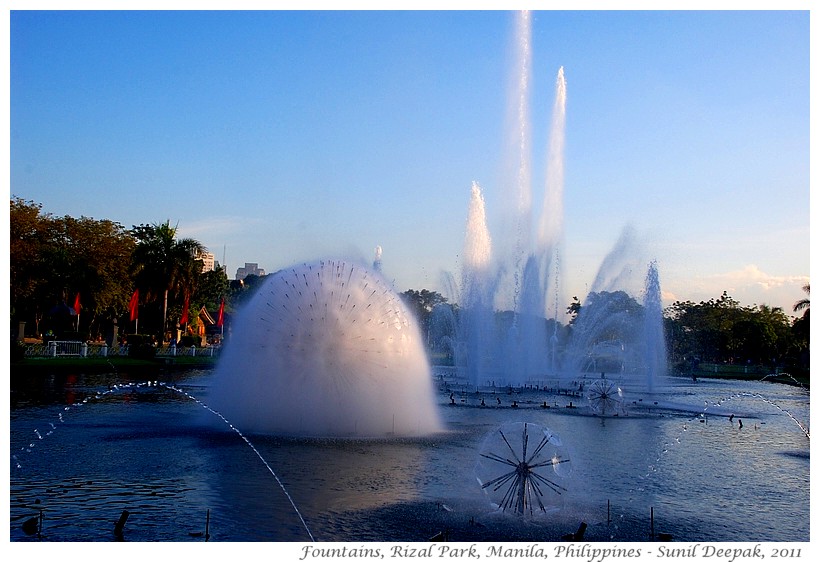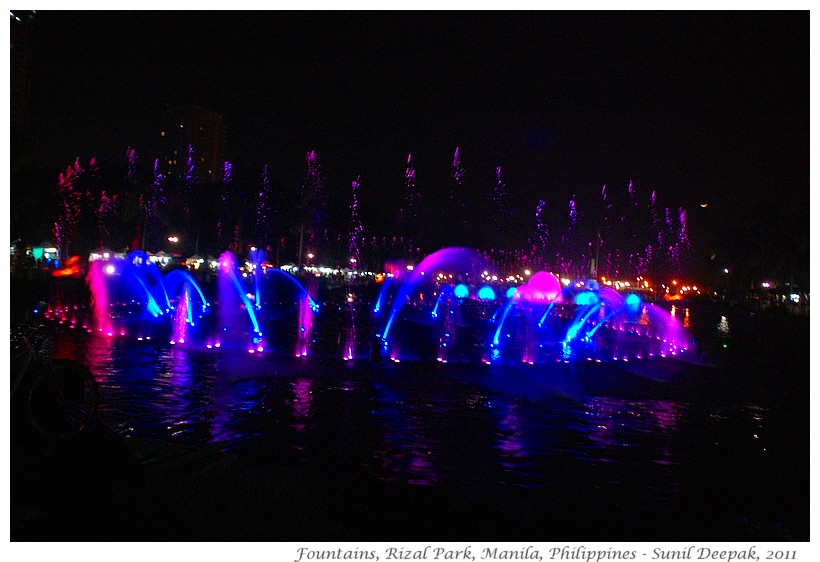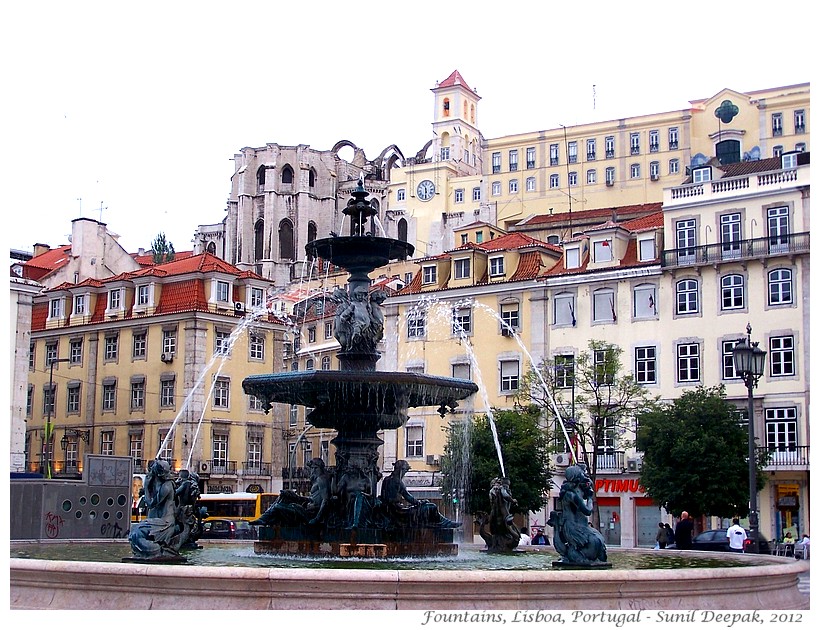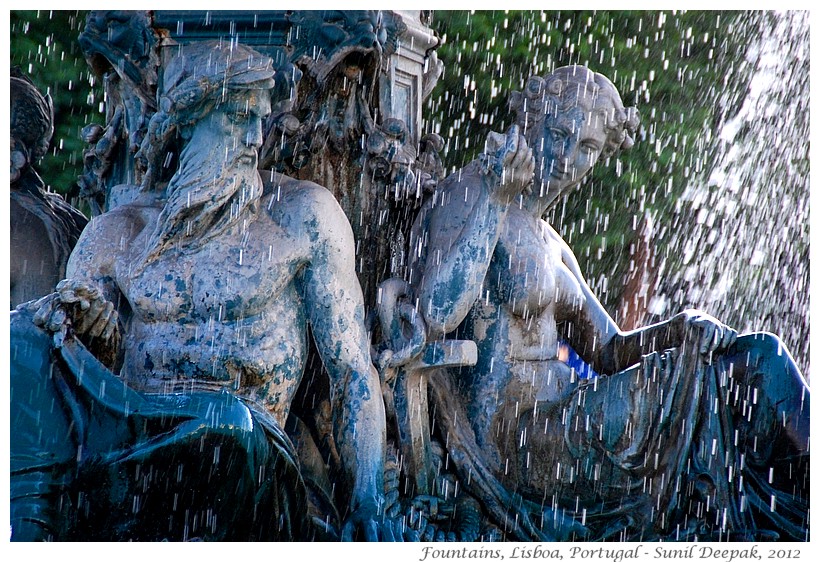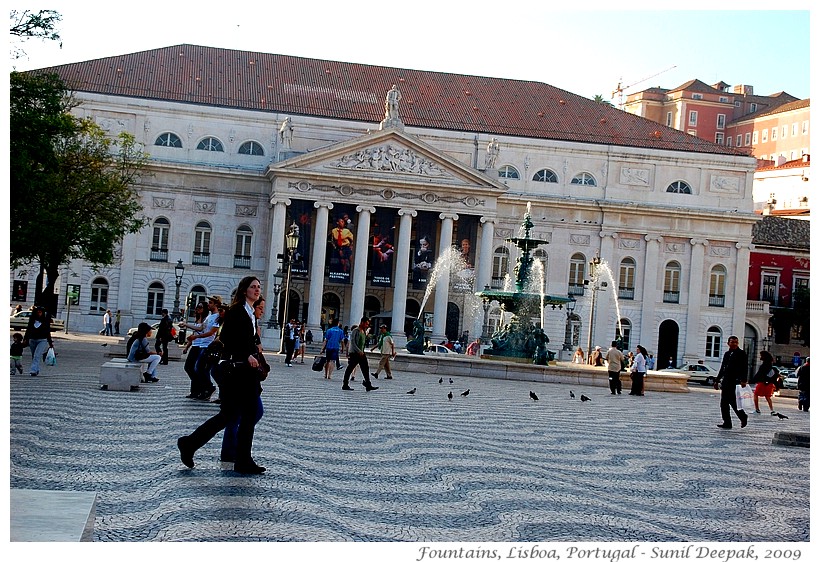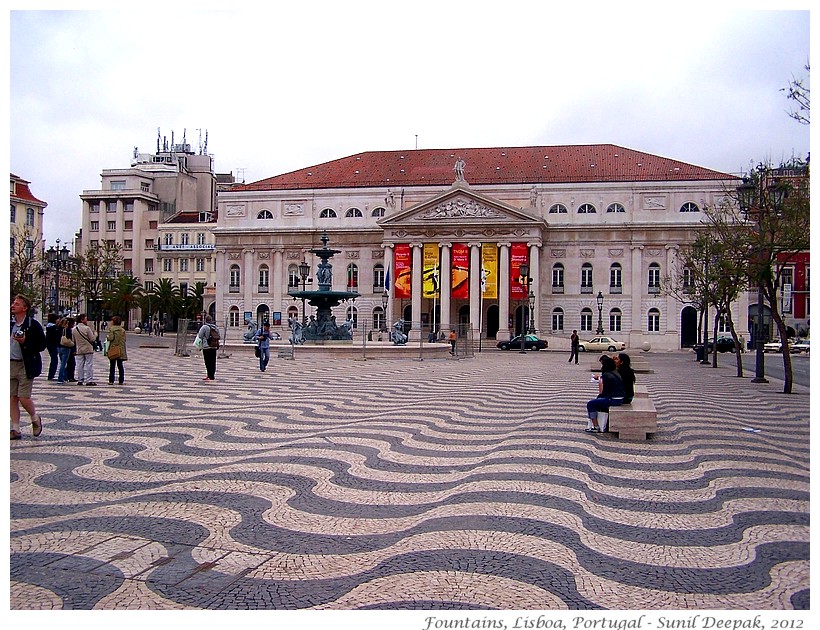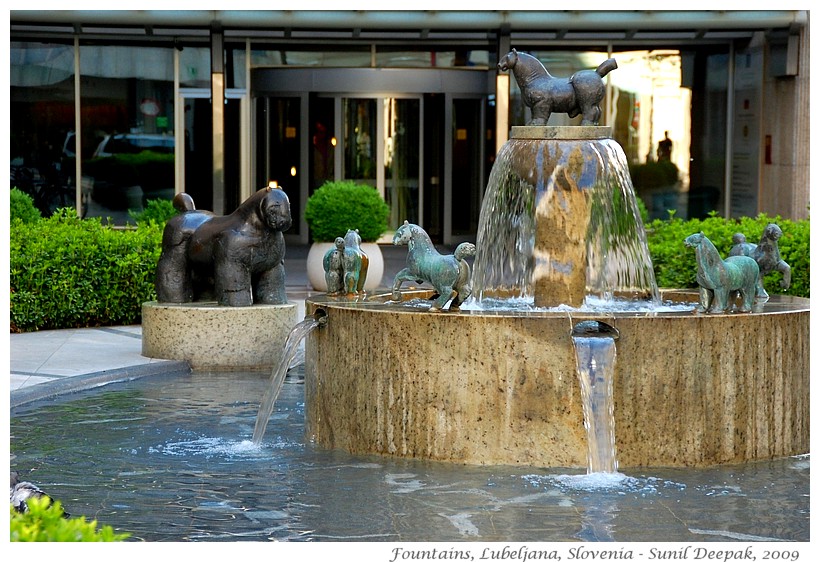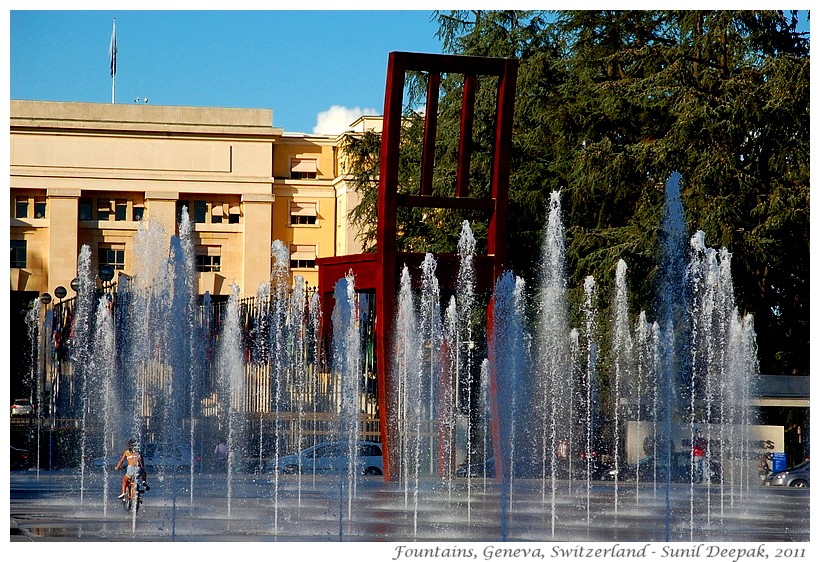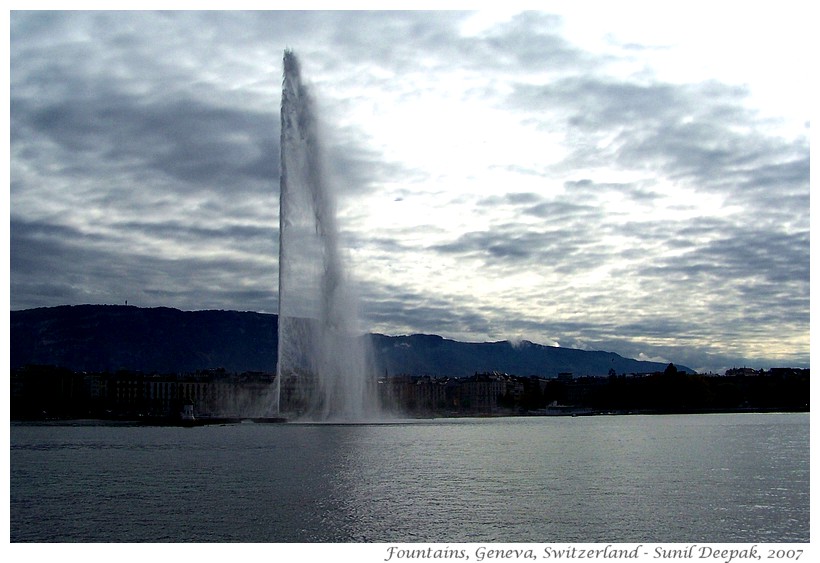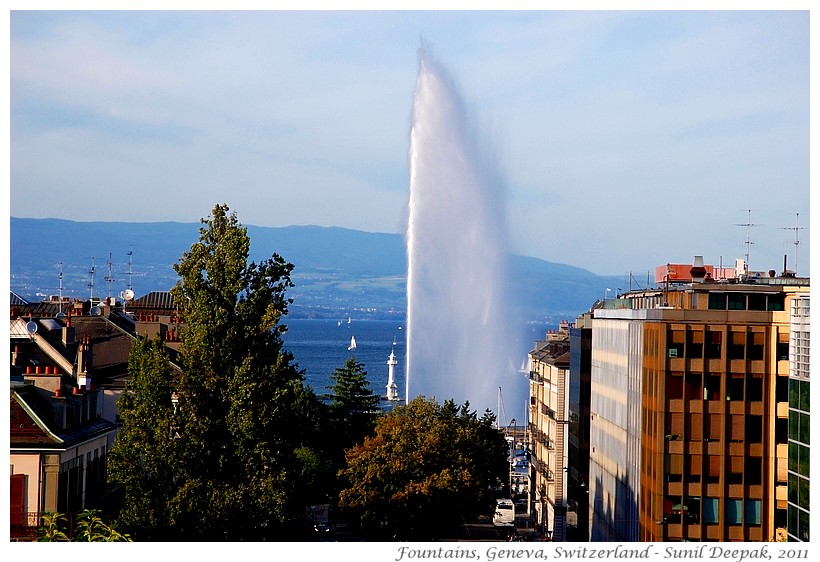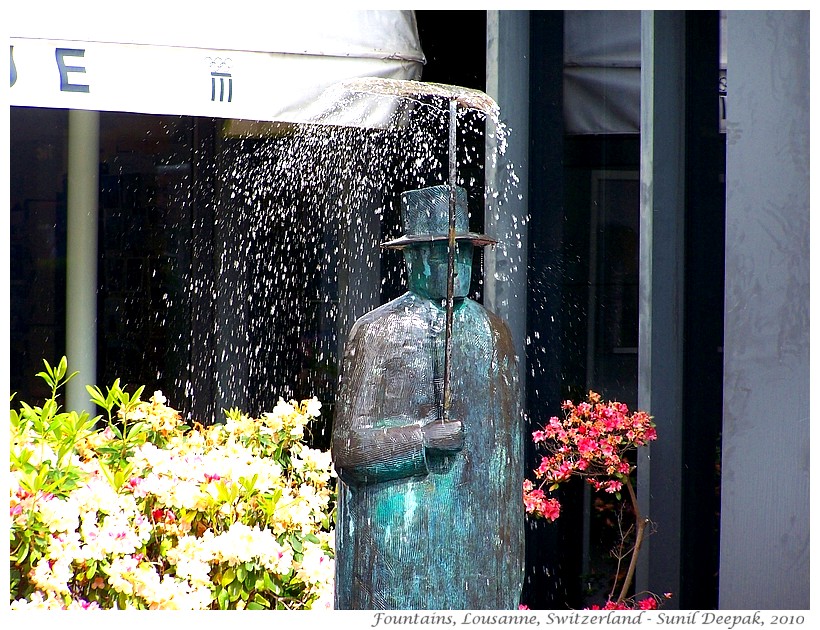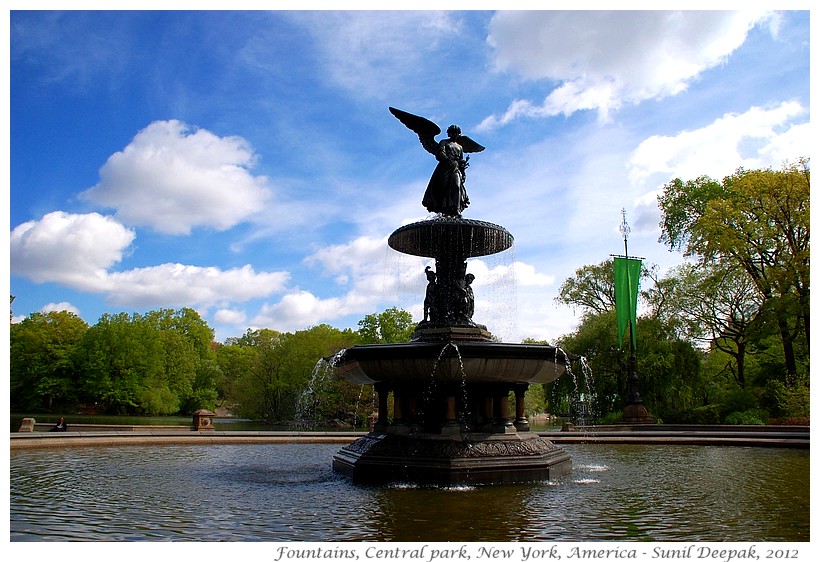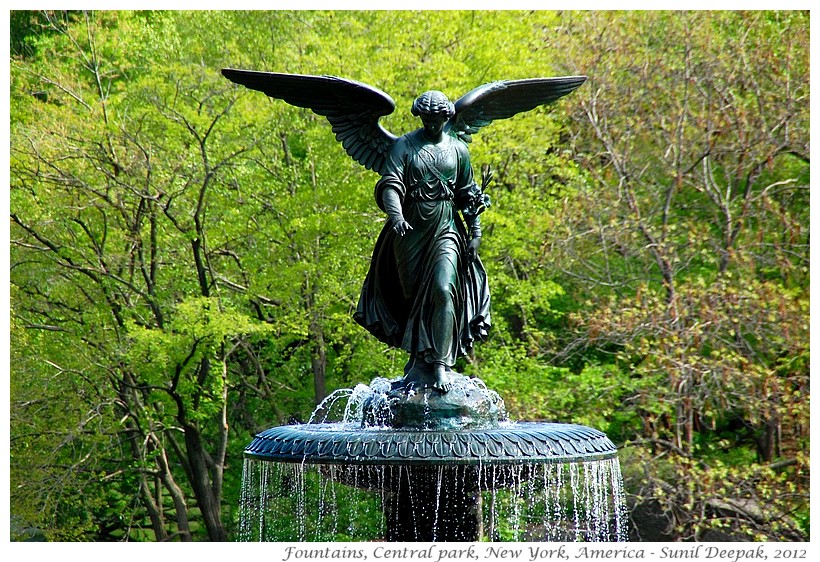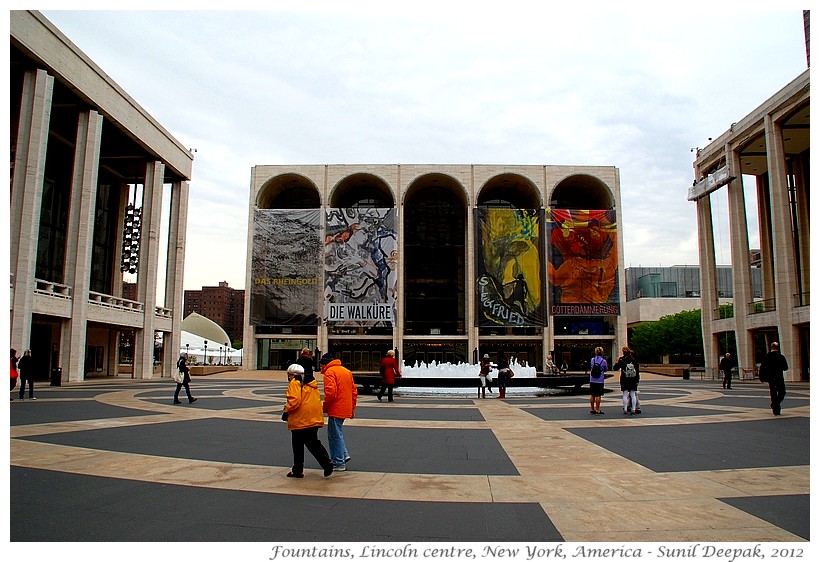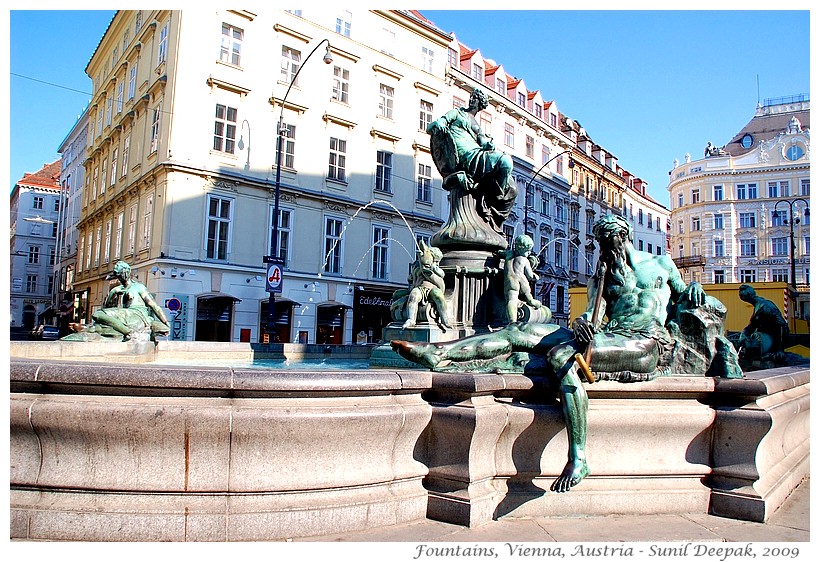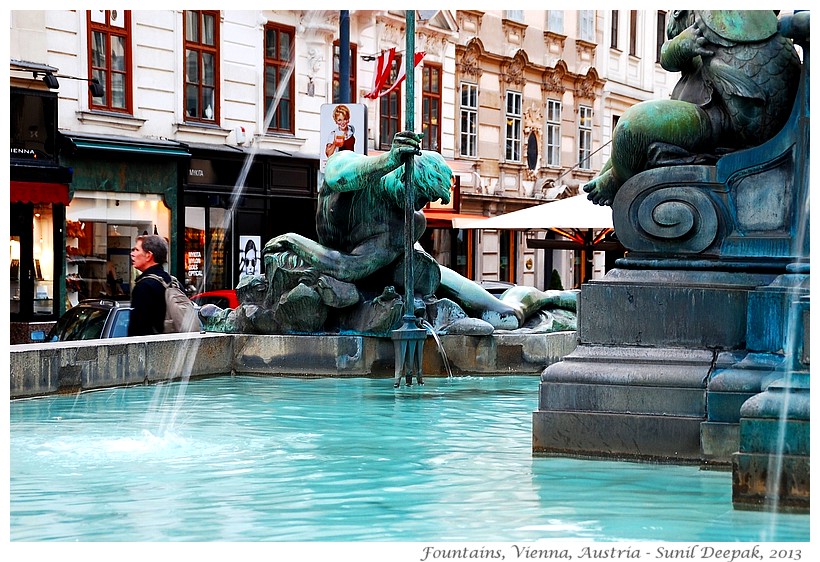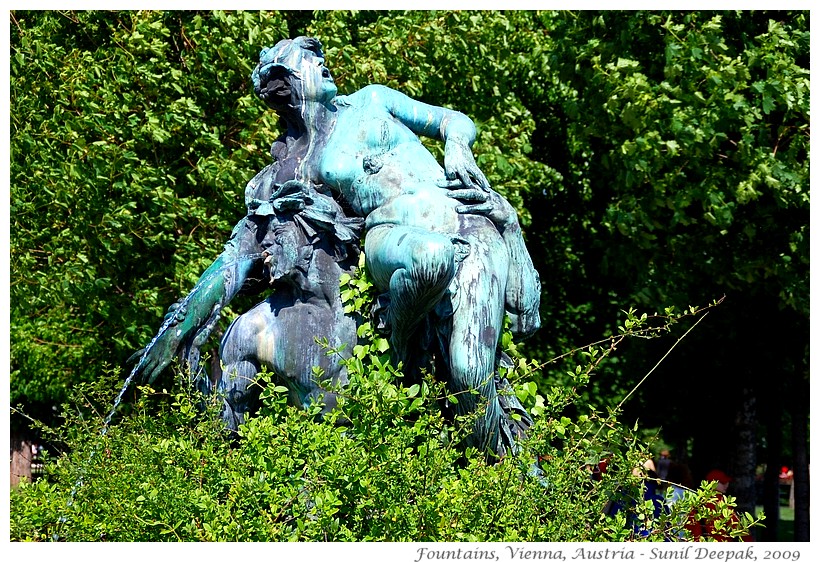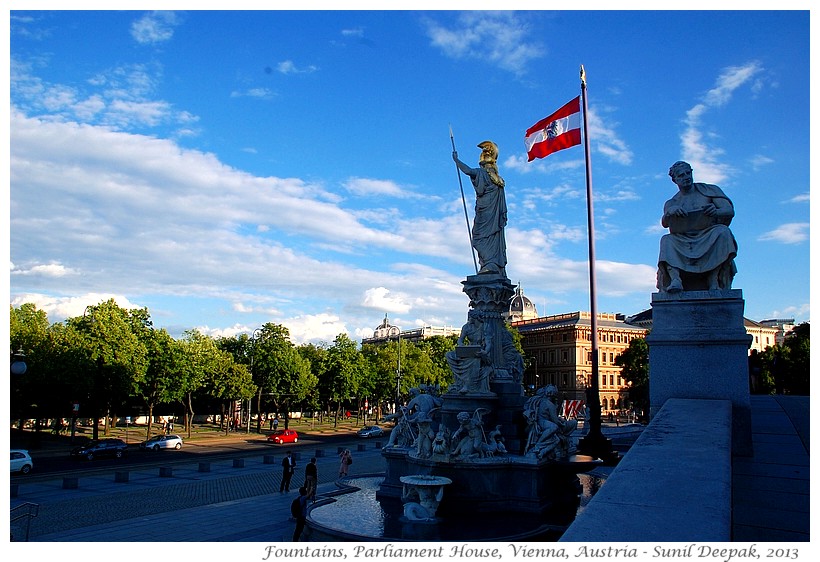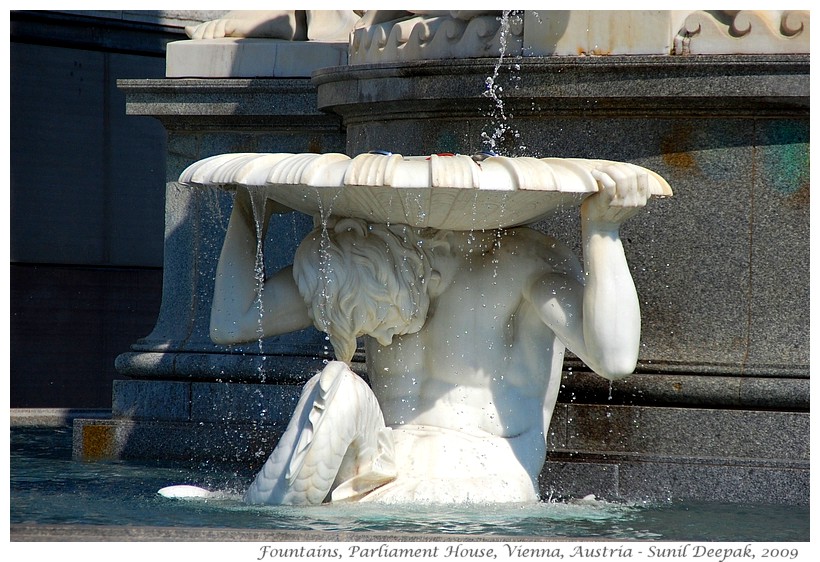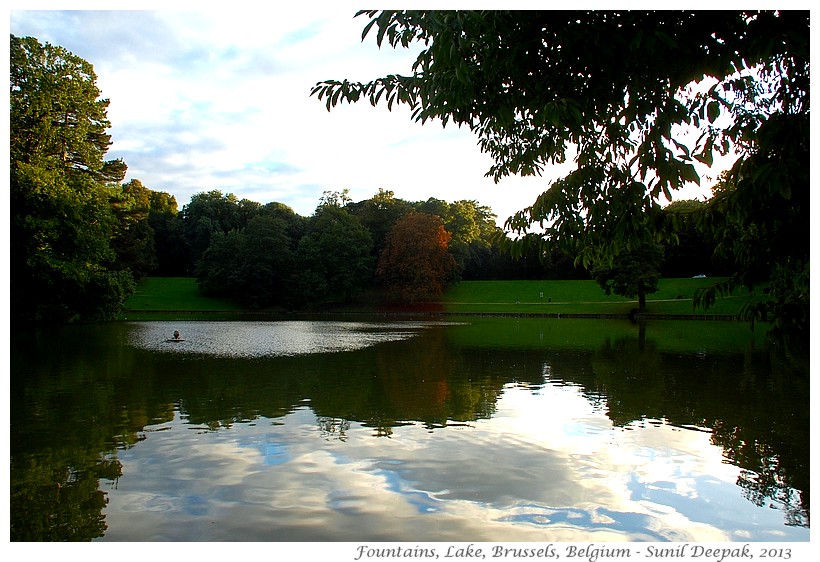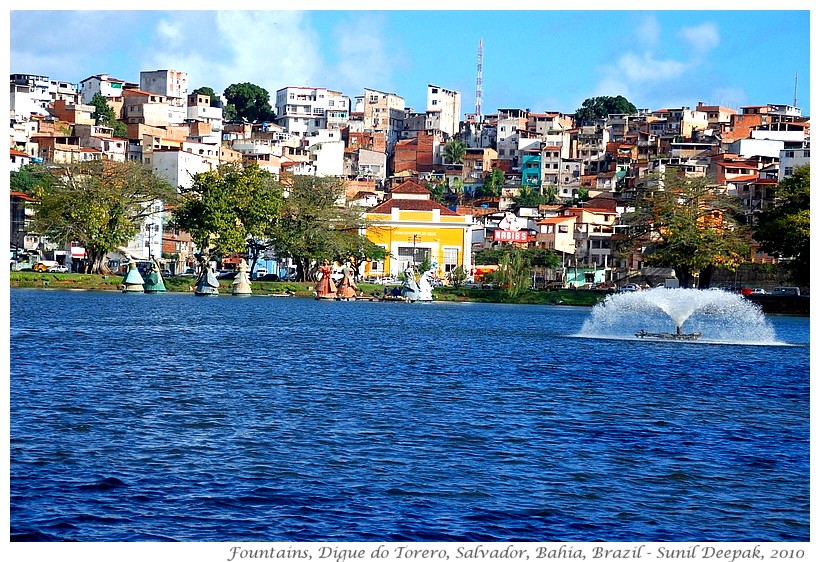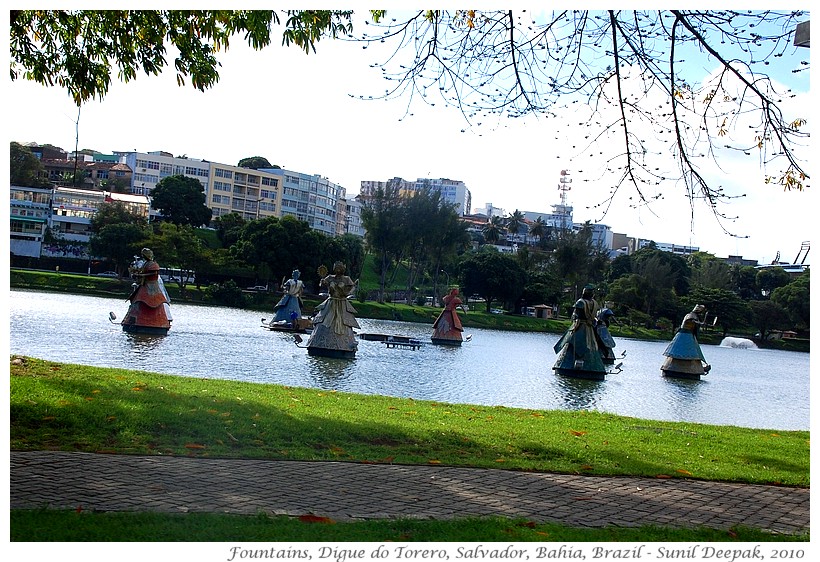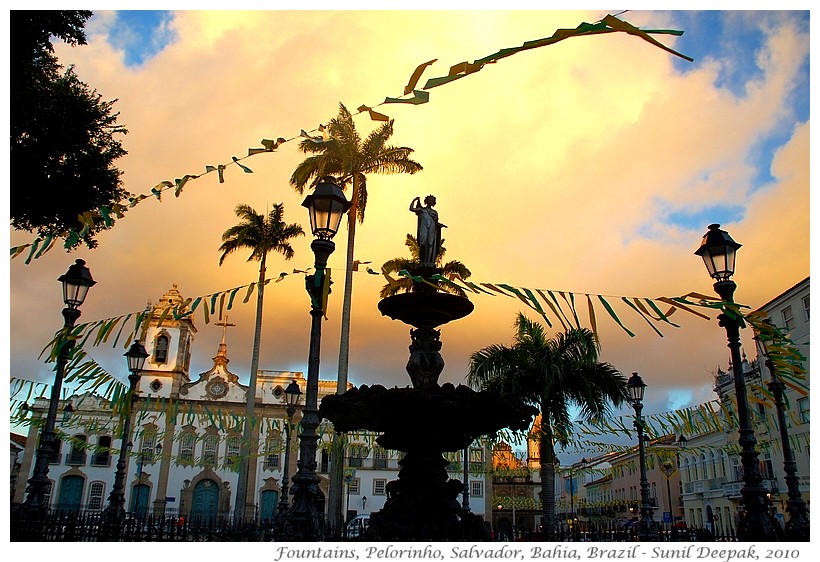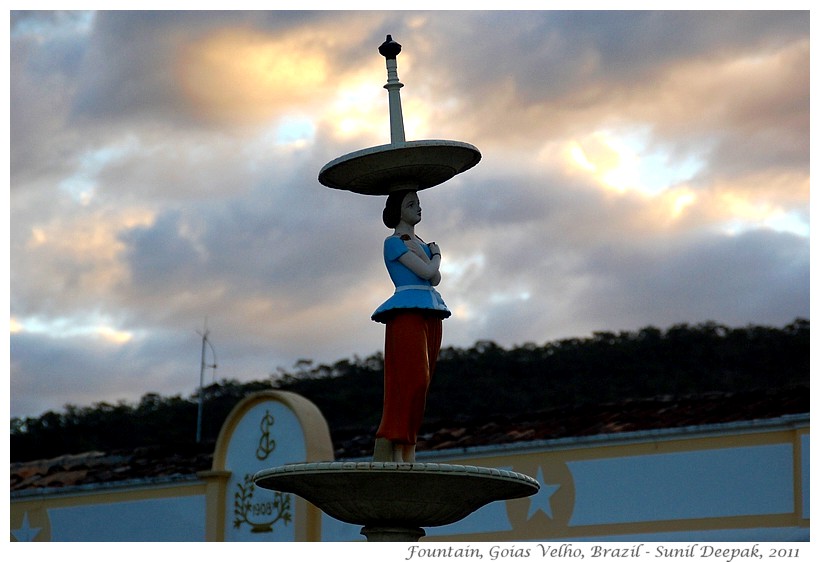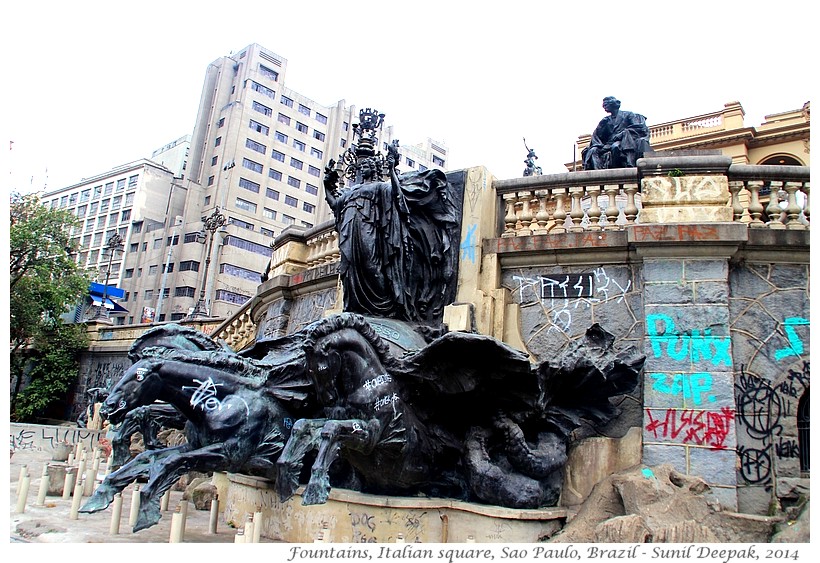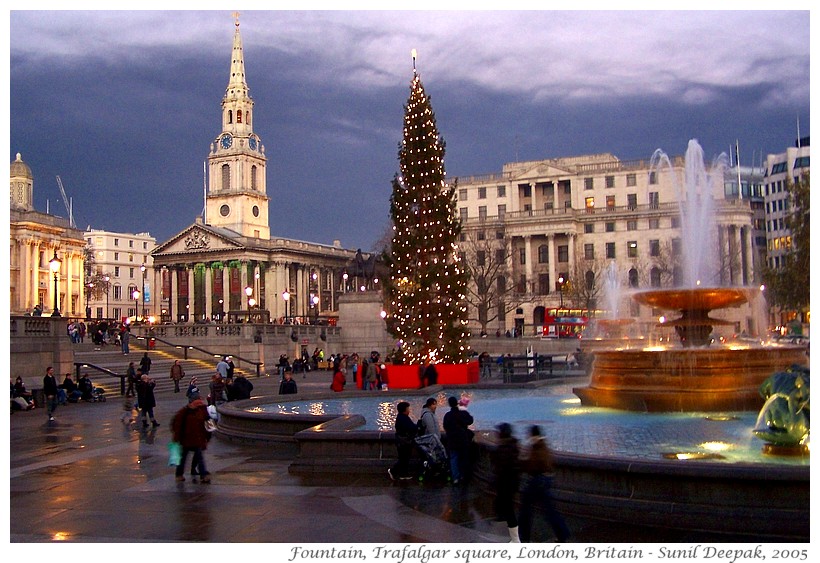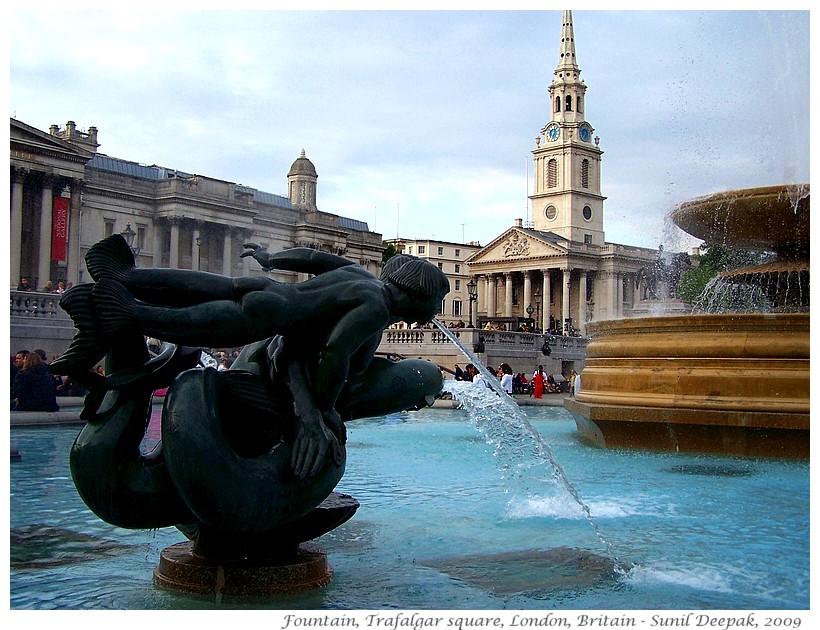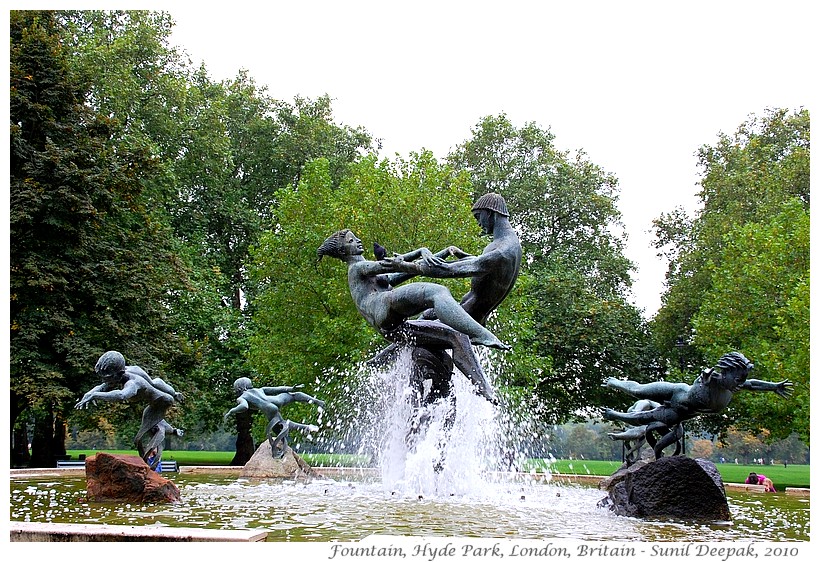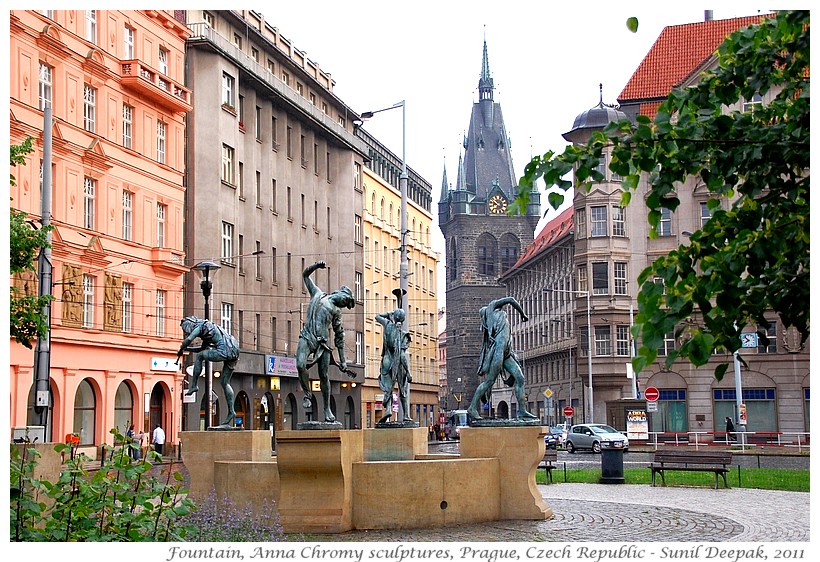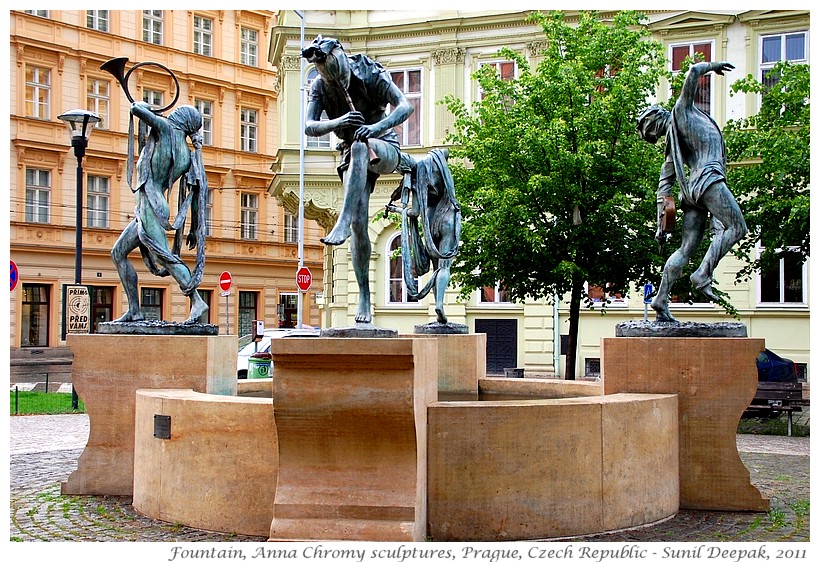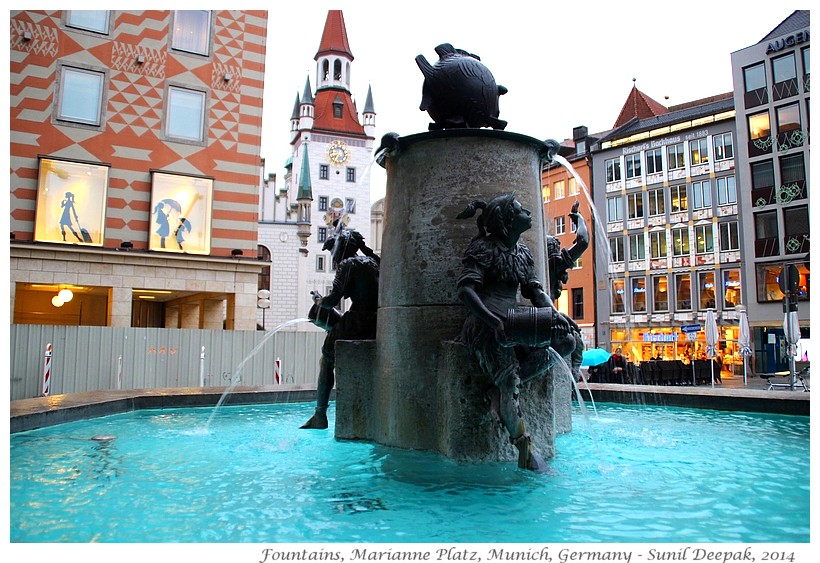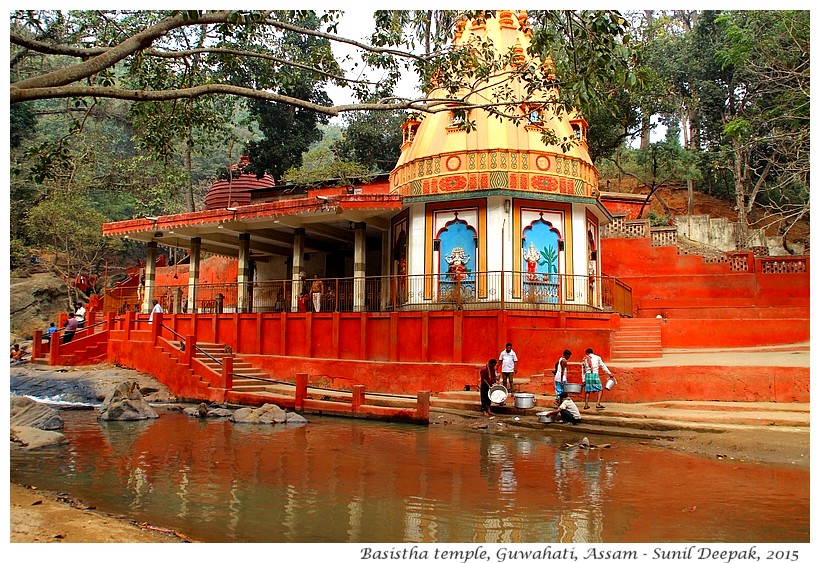
Situated at the base of verdant hills, close to a waterfall, this walk will also give you an opportunity to admire nature as well as the art of young students from Guwahati.
It is an easy walk, though depending upon the season, Guwahati can be a little hot and humid. So keep an umbrella or a hat with you, along with a bottle of water. And we are ready to go!
REACHING BASISTHA TEMPLE
The Basistha temple is at the south-western edge of Guwahati. The road near the state government secretariat in Dispur (Last Gate road), passing through Beltola and Basistha chariali, will take you to this temple located at the base of a hill.
The temple is connected by frequent city buses that pass on the main A.T. and G. S. roads. Just make sure that you take a bus that clearly specifies “Basistha temple” (in case of doubt, ask the bus conductors before boarding it). This is important as some of the buses terminate near Natun Bazar of Basistha, around 2 km before the temple. The bus going to the temple will drop you in the square right in front of it.
If you prefer, you can also take an auto or a taxi. Considering the difficulties of negotiating reasonable fares with the Guwahati auto drivers, personally I would suggest that you opt for a taxi – the city now has radio taxis such as Prime cabs and Green cabs that are convenient. In the end, you will pay slightly more or the same as the auto fare, but at least you won’t need to negotiate with some rude and sometimes, aggressive persons!
The area map below shows the places to visit during this walking tour.
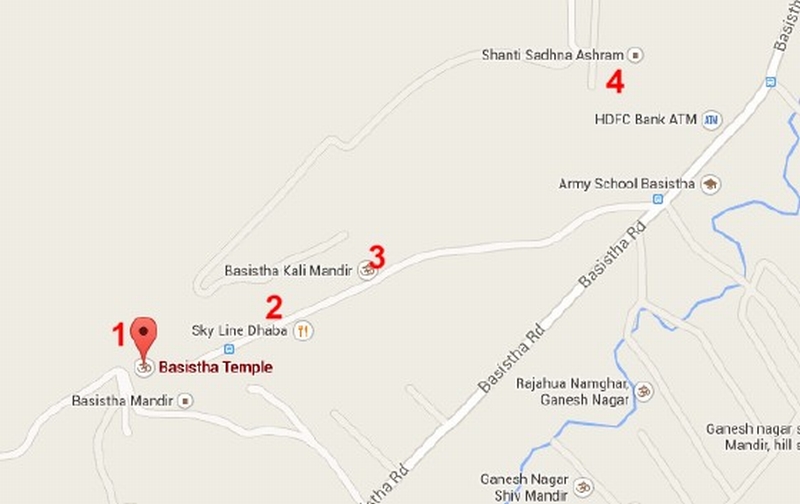
WHO WAS BASISTHA
Guru Basistha was one of the original sapta-rishis, the 7 spiritual gurus described as authors of the Rigveda. He gave his name to the Basistha (Vashishtha) clan. These 7 gurus as supposed to be the 7 stars that make the Great Bear constellation that connects to the Pole star.
In north India, he is known as Guru Vashishtha. In the north-east of India, “v” is pronounced as “b” and “s” is pronounced as “sh”, leading to the apparent change in name.
There are many stories linked to Guru Basistha. The most well-known story has him as the teacher of young princes of Ayodhya in Ramayana, Ram and Lakshman.
Linked to his role as the teacher of Rama is his book “Vashishtha Yoga”, that deals mainly with the meditation part of Yoga. This book is supposed to contain his lessons to Rama about understanding the world reality, and the nature of consciousness and creation. This book explains the importance of achieving shanti (peace), proper vichar (thoughts), santosh (satisfaction) and satsang (good company).
He is also known for another book, “Vashishtha Samhita”, a treatise on “electoral astrology” dealing with the identification of the most auspicious time (mahurat) for carrying out different activities such as marriages and journeys.
Different stories credited to Basistha are probably about different persons from the Basistha clan over a period of time, each of whom had taken the title of Guru Basistha. I think that the apparent contradictions of these stories that show him in different periods of time and link him to stories in different parts of India are an example of “fractal nature” of Indian way of thinking (as explained by Harpreet Singh) and as explained by Professor Diane Ecke in her book “India: a sacred geography”.
For example, a story has him as the son of gods Mitra Varuna. Mitra and Varuna were two ancient Indo-European deities or perhaps two names of the same deity, that are mentioned in Rigveda. Ruins of ancient temples to Mitra from the Pre-Christian era, when his cult was associated with the figure of a bull, are found in Rome. Another story calls him the the Manas (human) son of god Brahma, the creator of universe for Hindus. His name also appears in some Buddhist texts such as Vinaya Pitaka.
However temples and cults to Guru Basistha are not very common in other parts of India and are certainly not as popular, as they are in Assam. For example, the popular folk theatre of Assam called Bhaona, practiced around the island of Majuli, gives a lot of importance to guru Basistha in enacting the story of Ramayana.
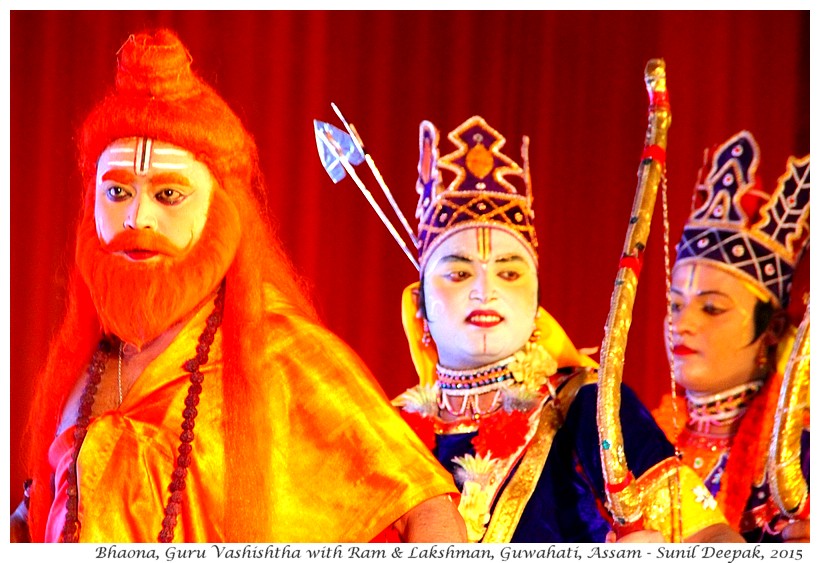
1 BASISTHA TEMPLE COMPLEX
The temple is placed at the base of a hill, where Basistha river passes over boulders creating different waterfalls. The temple includes different buildings.
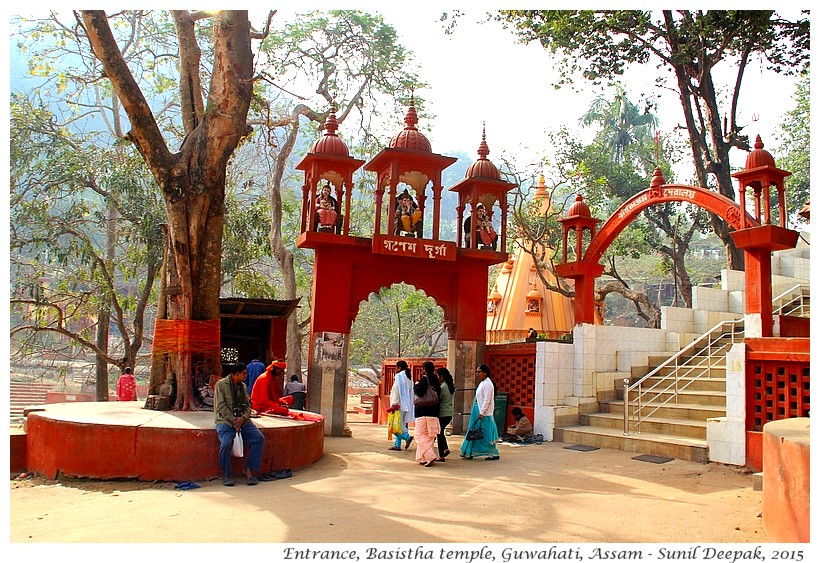
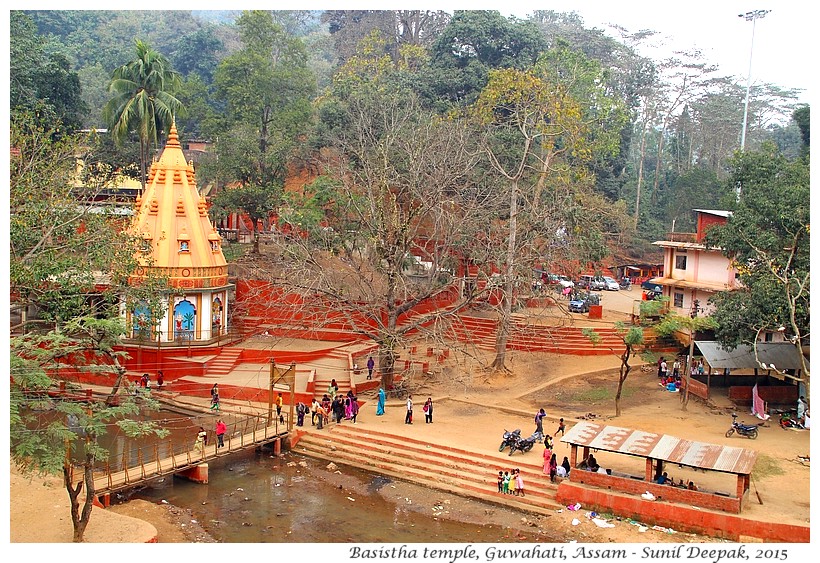
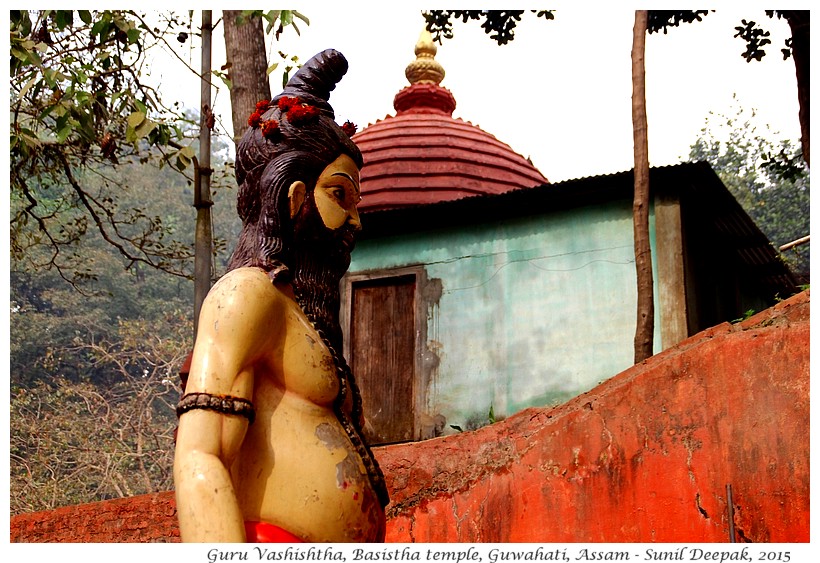
A red temple in typical Assamese style is located at a higher level, while closer to the river, there is a temple that carries different Ganesha statues on the outer walls.
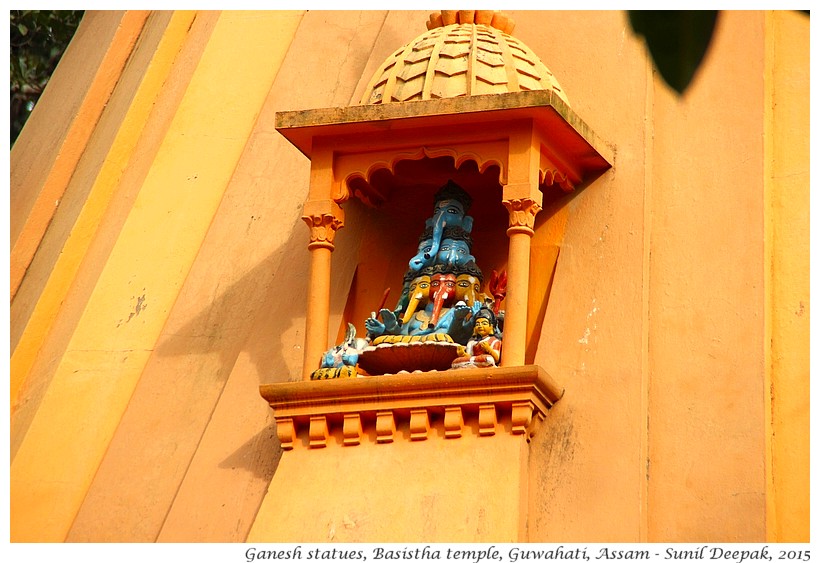
Across the river there is a sacred shrine under a tree, a small shrine to Shiva and on another small hill, a Manasha Devi temple with the story of Behula and Lakhinder.
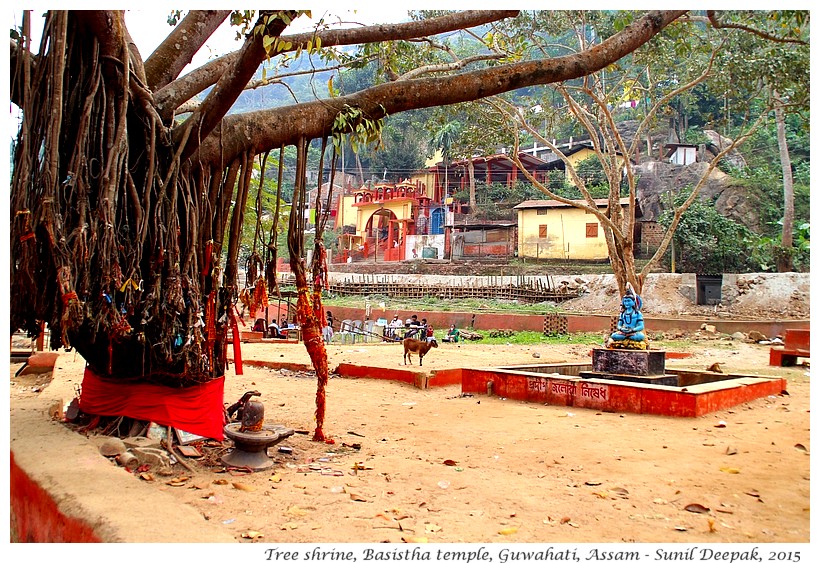
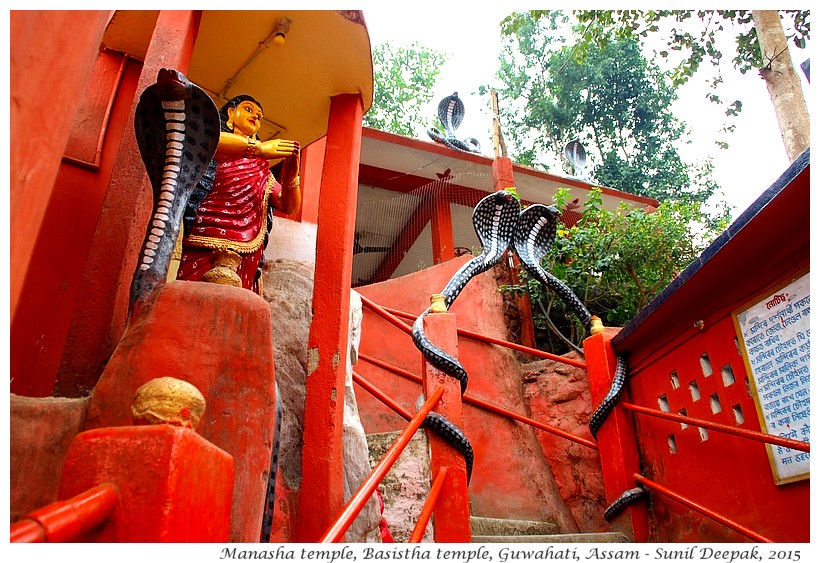
The whole area is full of monkeys and small animals like squirrels, that seem to live together with humans without any problems.
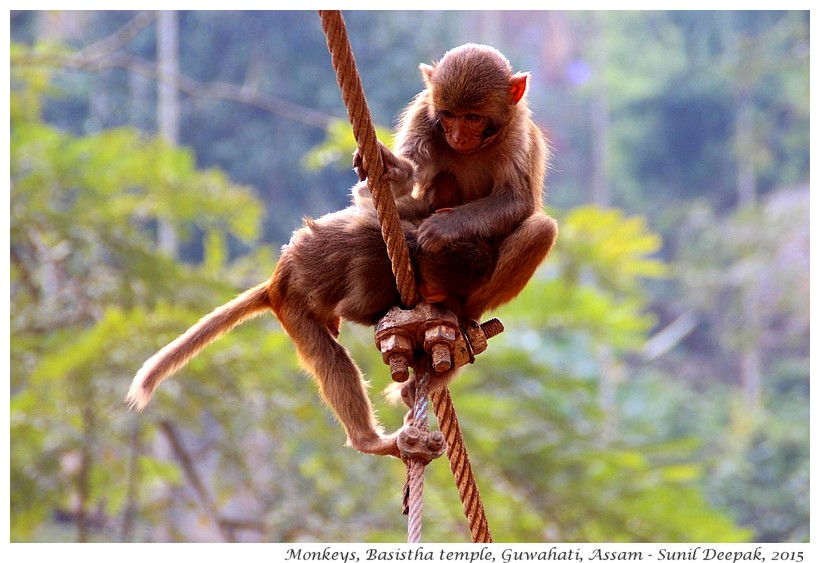
In the rainy season, the streams of water crashing on the big dark boulders and the small waterfalls make it a wonderful place to observe nature. A simple shaking bridge over the stream usually has the monkeys jumping playfully on the ropes.
In the grounds around the stream, you can observe people conducting ritual ceremonies for the dead family members such as pinda-daan in the water or getting the head shaved after the rituals, while monkeys wait to snatch the prayer flowers and sweets.
Upstream, above another small bridge over the gushing waters takes you to an area where there are built numerous shiva-lingas in the stream. I have heard about the trek to a village on the hill beyond this point to an ancient cave, but I have yet to do it!
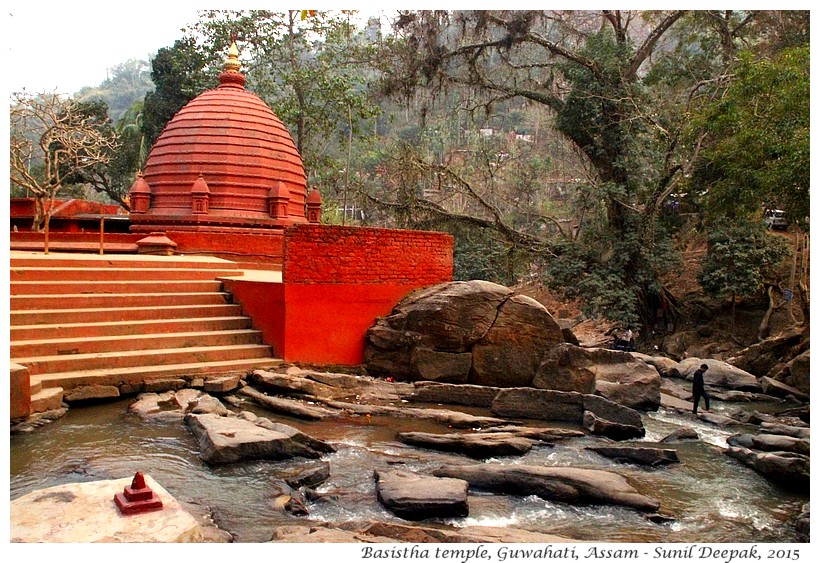
Local folklore says that the temple in this place goes back to many centuries, to the times of Ahom kings. However, the present day temple buildings do not look very old.
THE SQUARE OUTSIDE THE TEMPLE
In the square outside the temple, a series of charming shacks have women selling traditional packets containing flowers, incense, coconut etc. for the temple prayers.
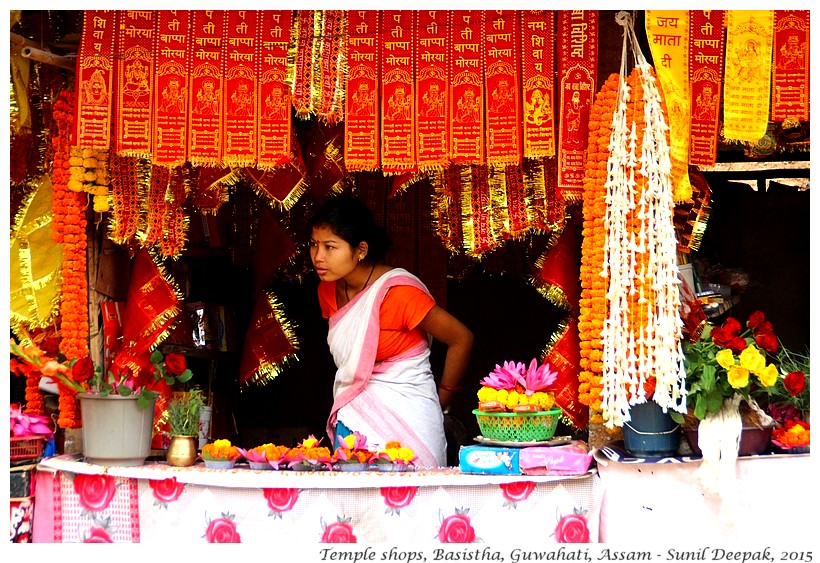
The square where the buses stop is full of small shops selling souvenirs. This is also the place where they build elaborate house like bamboo and hay structures for the traditional Assamese festivals like Bihu.
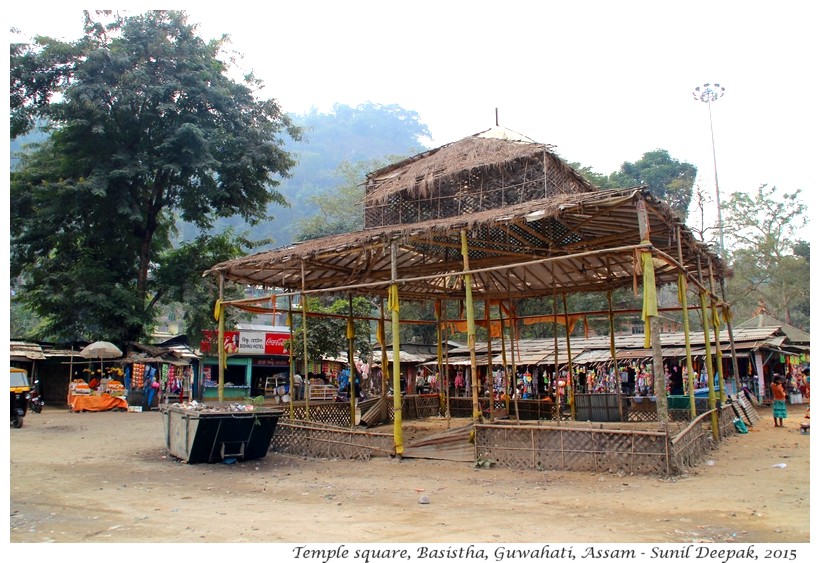
On specific days linked to the traditional festivals, this space gets full of shops and visitors.
2 ARTS COLLEGE OF GUWAHATI
If you walk from the temple towards the city you will see the simple building of the city Fine Arts College on your left, with hostels at the top of a hill.
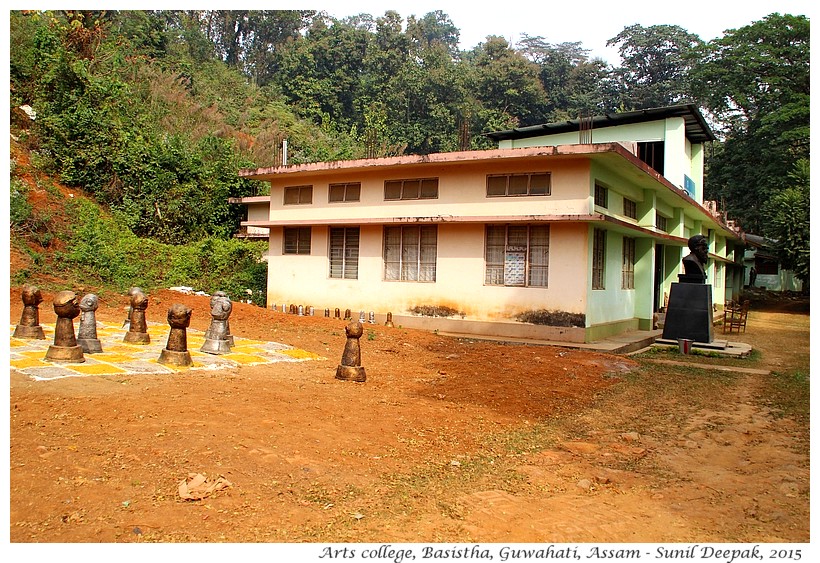
If you have time, take a look at the grounds of the art college as they have different examples of the sculptures and other art materials by the students.
Personally, it was absolutely wonderful to discover and visit these grounds and see some of the sculptures, many of them covered with dust, making this place look like an ancient archaeological site.
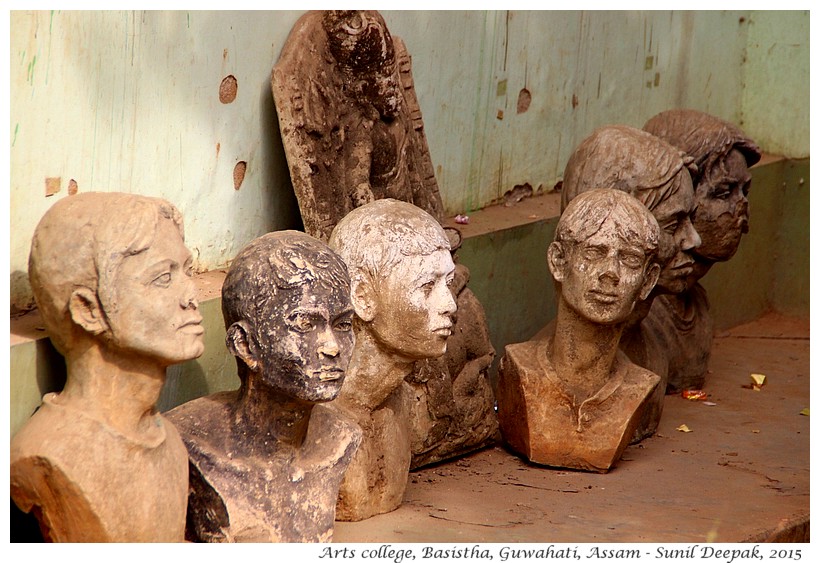
Across the road, in front of the college gate, when I visited it, there was an absolutely amazing cloth-sculpture with goddesses Durga and Kali, in vivid rust and earth colours.
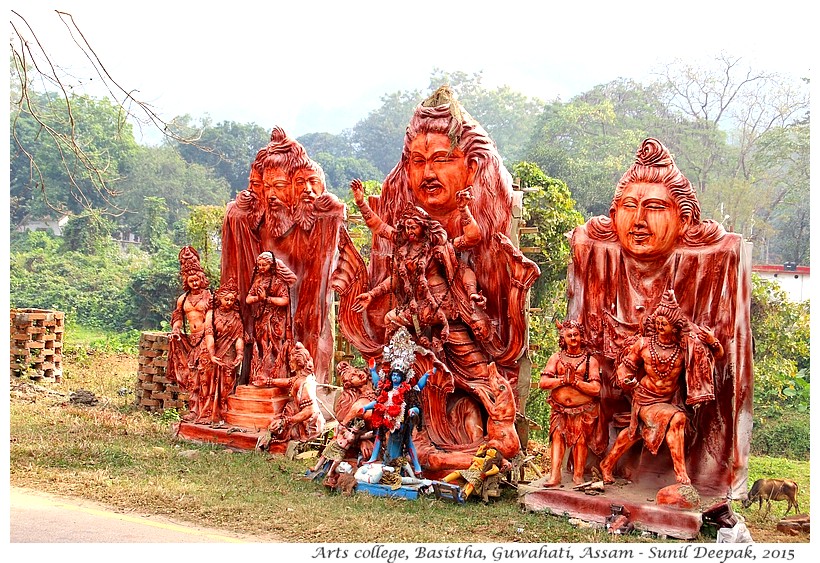
MORE PLACES TO SEE IN THE AREA
Further down from the arts college, on the left you will see the Botanical Gardens (3) of Guwahati on another hill. The gardens are closed to the public and I have no idea when and if they will be reopened. Old boards in the garden show a long list of different trees and plants present in it. Old benches and paths seem to indicate that at some time in the past these gardens were functioning.
If you search for "botanical gardens of Guwahati" on internet, you will only find the mention of botanical gardens inside the city zoo while there is nothing about these botanical gardens of Basistha. I think that renovating and opening these botanical gardens will be a good step for increasing the places to visit in this part of Guwahati.
The small road (not shown in the Google map above) in front of the closed Botanical Gardens leads to the Shanti Sadhana ashram (4) where spiritual retreats and events are organised. However, I did not go inside to find out more about this Ashram, so I can’t provide more information about them.
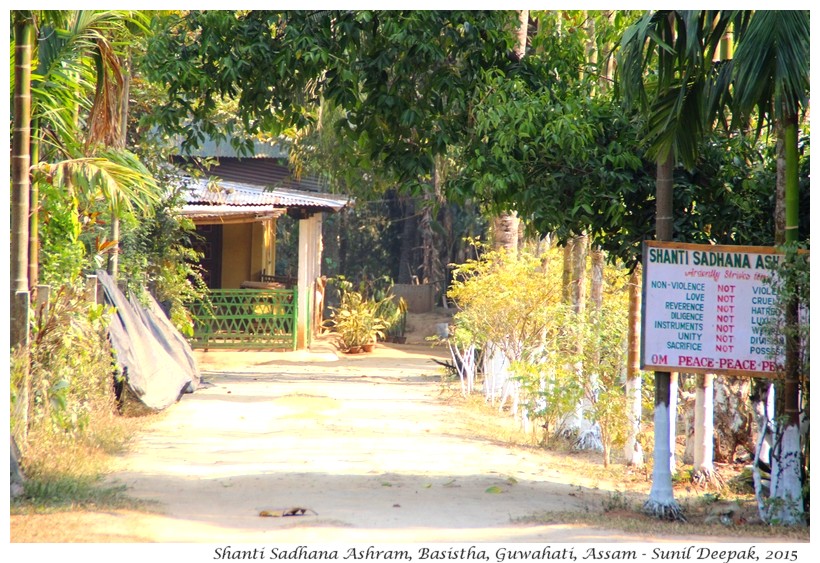
Across the road from the Botanical garden, down an escarpment, is a tiny but charming Hanuman temple in a simple hut where women from surrounding areas gather for prayers and kirtan (singing of hymns) on Tuesdays.
If you continue on the road towards the city, on the left side you will see the Indian army camp and the army base hospital. The army camp also has a couple of prayer places, including a south-Indian Hindu temple and a Sikh gurudwara.

WHO WAS BASISTHA
Guru Basistha was one of the original sapta-rishis, the 7 spiritual gurus described as authors of the Rigveda. He gave his name to the Basistha (Vashishtha) clan. These 7 gurus as supposed to be the 7 stars that make the Great Bear constellation that connects to the Pole star.
In north India, he is known as Guru Vashishtha. In the north-east of India, “v” is pronounced as “b” and “s” is pronounced as “sh”, leading to the apparent change in name.
There are many stories linked to Guru Basistha. The most well-known story has him as the teacher of young princes of Ayodhya in Ramayana, Ram and Lakshman.
Linked to his role as the teacher of Rama is his book “Vashishtha Yoga”, that deals mainly with the meditation part of Yoga. This book is supposed to contain his lessons to Rama about understanding the world reality, and the nature of consciousness and creation. This book explains the importance of achieving shanti (peace), proper vichar (thoughts), santosh (satisfaction) and satsang (good company).
He is also known for another book, “Vashishtha Samhita”, a treatise on “electoral astrology” dealing with the identification of the most auspicious time (mahurat) for carrying out different activities such as marriages and journeys.
Different stories credited to Basistha are probably about different persons from the Basistha clan over a period of time, each of whom had taken the title of Guru Basistha. I think that the apparent contradictions of these stories that show him in different periods of time and link him to stories in different parts of India are an example of “fractal nature” of Indian way of thinking (as explained by Harpreet Singh) and as explained by Professor Diane Ecke in her book “India: a sacred geography”.
For example, a story has him as the son of gods Mitra Varuna. Mitra and Varuna were two ancient Indo-European deities or perhaps two names of the same deity, that are mentioned in Rigveda. Ruins of ancient temples to Mitra from the Pre-Christian era, when his cult was associated with the figure of a bull, are found in Rome. Another story calls him the the Manas (human) son of god Brahma, the creator of universe for Hindus. His name also appears in some Buddhist texts such as Vinaya Pitaka.
However temples and cults to Guru Basistha are not very common in other parts of India and are certainly not as popular, as they are in Assam. For example, the popular folk theatre of Assam called Bhaona, practiced around the island of Majuli, gives a lot of importance to guru Basistha in enacting the story of Ramayana.

1 BASISTHA TEMPLE COMPLEX
The temple is placed at the base of a hill, where Basistha river passes over boulders creating different waterfalls. The temple includes different buildings.



A red temple in typical Assamese style is located at a higher level, while closer to the river, there is a temple that carries different Ganesha statues on the outer walls.

Across the river there is a sacred shrine under a tree, a small shrine to Shiva and on another small hill, a Manasha Devi temple with the story of Behula and Lakhinder.


The whole area is full of monkeys and small animals like squirrels, that seem to live together with humans without any problems.

In the rainy season, the streams of water crashing on the big dark boulders and the small waterfalls make it a wonderful place to observe nature. A simple shaking bridge over the stream usually has the monkeys jumping playfully on the ropes.
In the grounds around the stream, you can observe people conducting ritual ceremonies for the dead family members such as pinda-daan in the water or getting the head shaved after the rituals, while monkeys wait to snatch the prayer flowers and sweets.
Upstream, above another small bridge over the gushing waters takes you to an area where there are built numerous shiva-lingas in the stream. I have heard about the trek to a village on the hill beyond this point to an ancient cave, but I have yet to do it!

Local folklore says that the temple in this place goes back to many centuries, to the times of Ahom kings. However, the present day temple buildings do not look very old.
THE SQUARE OUTSIDE THE TEMPLE
In the square outside the temple, a series of charming shacks have women selling traditional packets containing flowers, incense, coconut etc. for the temple prayers.

The square where the buses stop is full of small shops selling souvenirs. This is also the place where they build elaborate house like bamboo and hay structures for the traditional Assamese festivals like Bihu.

On specific days linked to the traditional festivals, this space gets full of shops and visitors.
2 ARTS COLLEGE OF GUWAHATI
If you walk from the temple towards the city you will see the simple building of the city Fine Arts College on your left, with hostels at the top of a hill.

If you have time, take a look at the grounds of the art college as they have different examples of the sculptures and other art materials by the students.
Personally, it was absolutely wonderful to discover and visit these grounds and see some of the sculptures, many of them covered with dust, making this place look like an ancient archaeological site.

Across the road, in front of the college gate, when I visited it, there was an absolutely amazing cloth-sculpture with goddesses Durga and Kali, in vivid rust and earth colours.

MORE PLACES TO SEE IN THE AREA
Further down from the arts college, on the left you will see the Botanical Gardens (3) of Guwahati on another hill. The gardens are closed to the public and I have no idea when and if they will be reopened. Old boards in the garden show a long list of different trees and plants present in it. Old benches and paths seem to indicate that at some time in the past these gardens were functioning.
If you search for "botanical gardens of Guwahati" on internet, you will only find the mention of botanical gardens inside the city zoo while there is nothing about these botanical gardens of Basistha. I think that renovating and opening these botanical gardens will be a good step for increasing the places to visit in this part of Guwahati.
The small road (not shown in the Google map above) in front of the closed Botanical Gardens leads to the Shanti Sadhana ashram (4) where spiritual retreats and events are organised. However, I did not go inside to find out more about this Ashram, so I can’t provide more information about them.

Across the road from the Botanical garden, down an escarpment, is a tiny but charming Hanuman temple in a simple hut where women from surrounding areas gather for prayers and kirtan (singing of hymns) on Tuesdays.
If you continue on the road towards the city, on the left side you will see the Indian army camp and the army base hospital. The army camp also has a couple of prayer places, including a south-Indian Hindu temple and a Sikh gurudwara.
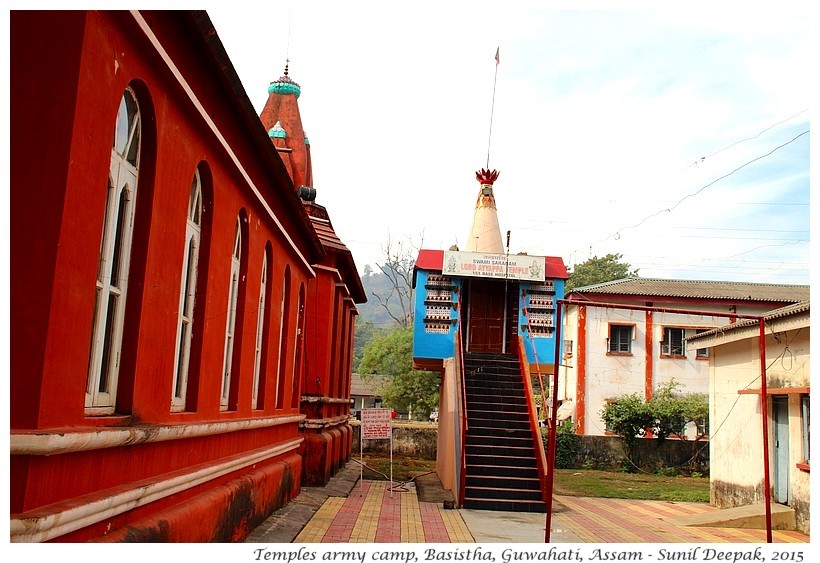
Across the road from the Army base hospital, there is a well-known Blind school and the office of Assam State Commissioner for Persons with Disabilities. Here on the side of the road, you can take the bus or an auto to go back to the city.
A REQUEST
Unfortunately, Guwahati does not have a tradition of keeping garbage collection boxes in such tourist places. Probably that is why people visiting this temple throw away their garbage in the river or leave it wherever they can. The river shows signs of this careless behaviour, especially on festival days when it is crowded.
Though it can be equally ugly, at least the organic garbage goes back to the mother earth or monkeys take it away. However, plastic bags and aluminium foil wrappers remain there forever. So please do take care of your garbage and if possible consider using paper bags or disposable clay cups (and in the process, give work to the potters of the city).
Though it can be equally ugly, at least the organic garbage goes back to the mother earth or monkeys take it away. However, plastic bags and aluminium foil wrappers remain there forever. So please do take care of your garbage and if possible consider using paper bags or disposable clay cups (and in the process, give work to the potters of the city).
There is a big black coloured garbage collection container in the square outside the temple, please use that.
CONCLUSIONS
I loved visiting Basistha temple very much because it brought together an encounter with the sacred traditions of Assam, as well as with natural beauty and art. The places described in this post are quite close to each other, so once you have reached Basistha temple, it is easy to walk around and visit all of them.
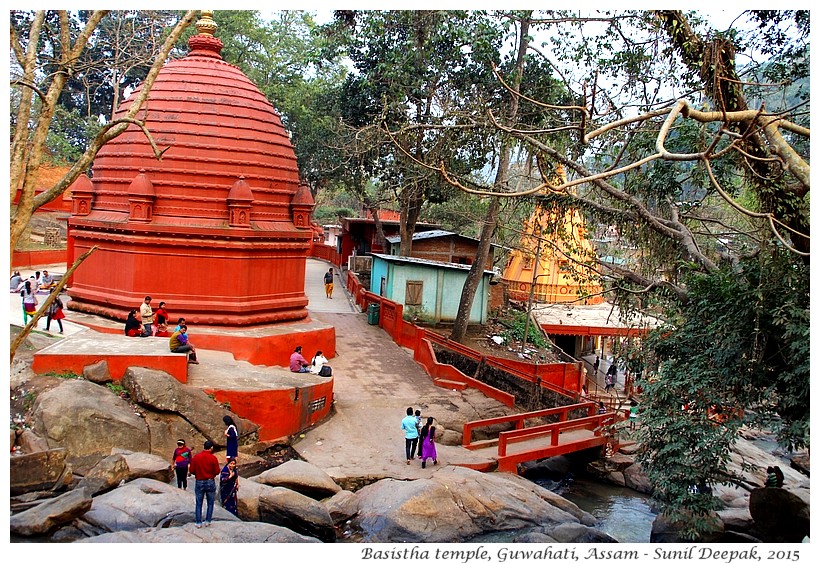
If you are visiting Guwahati, do keep a couple of hours to visit this beautiful place.
I hope to go back to Basistha temple some time soon to complete the village trek on the hill and to see for myself the Basistha cave. May be I will be lucky and see some elephants as well. If I do, I will tell you about it!
CONCLUSIONS
I loved visiting Basistha temple very much because it brought together an encounter with the sacred traditions of Assam, as well as with natural beauty and art. The places described in this post are quite close to each other, so once you have reached Basistha temple, it is easy to walk around and visit all of them.

If you are visiting Guwahati, do keep a couple of hours to visit this beautiful place.
I hope to go back to Basistha temple some time soon to complete the village trek on the hill and to see for myself the Basistha cave. May be I will be lucky and see some elephants as well. If I do, I will tell you about it!
***

